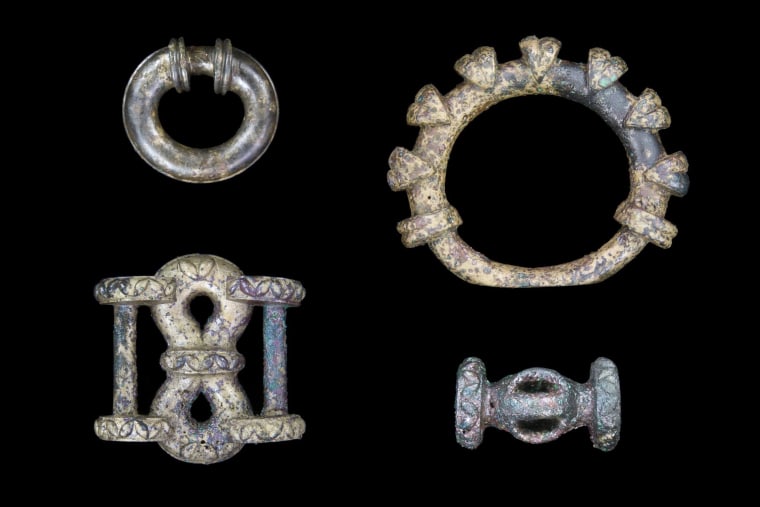
More than 2,000 years ago, pieces of an Iron Age chariot were burnt and buried, perhaps as a religious offering. Now, archaeologists have discovered the bronze remains of this sacrifice. The remains were discovered at the Burrough Hill Iron Age Hillfort, a fortified hilltop structure that was once surrounded by farms and settlements, used most heavily between about 100 B.C. and A.D. 50.
The pieces are the metal remains of a chariot that once belonged to a warrior or noble. One linchpin is decorated with three wavy lines radiating from a single point, almost like the modern flag for the Isle of Man, a British dependency in the Irish Sea. The pieces were found upon a layer of chaff, which may have provided fuel for the burning ritual.
"This is the most remarkable discovery of material we made at Burrough Hill in the five years we worked on the site," University of Leicester archaeologist Jeremy Taylor said in a statement. Nora Battermann, one of the four students to make the find, called it "the find of a lifetime."
—Stephanie Pappas, LiveScience
This is a condensed version of a report from Live Science. Read the full report. Follow Stephanie Pappas on Twitter and Google+. Follow us @livescience, Facebook& Google+.
